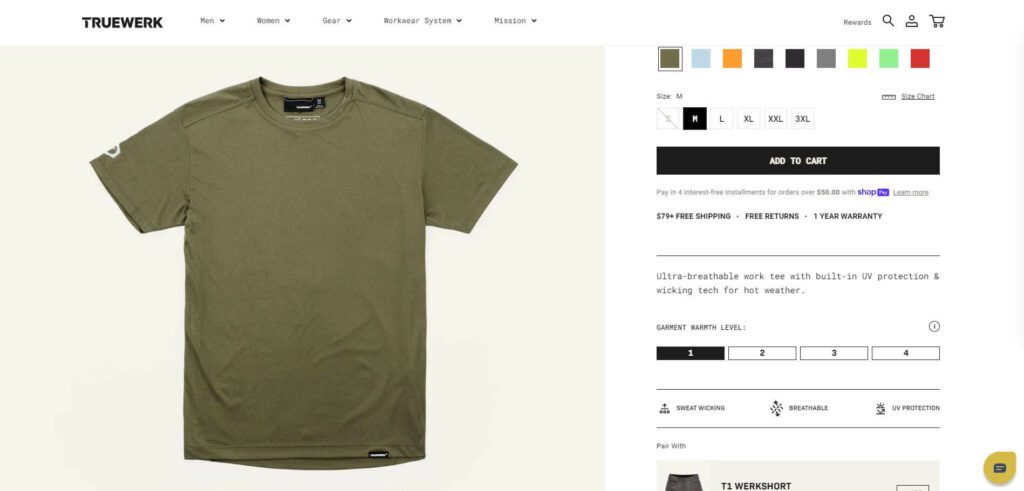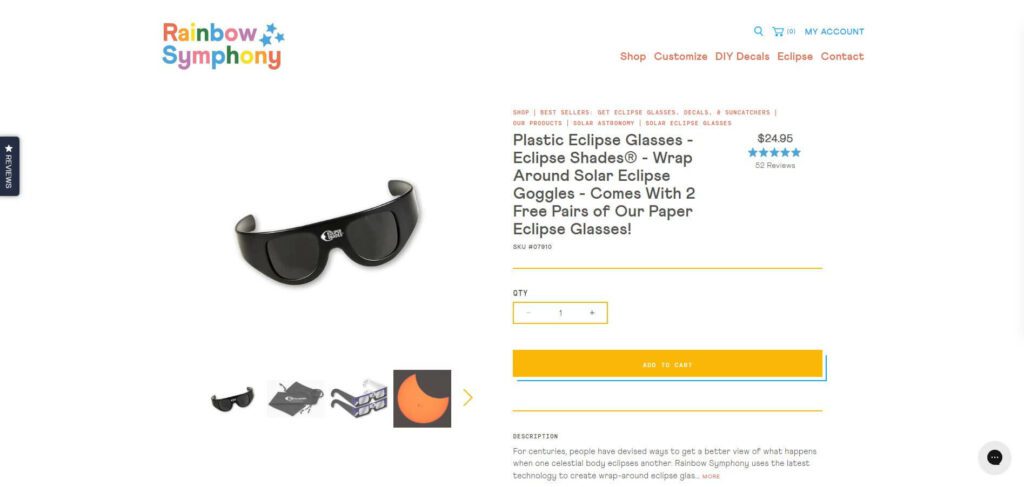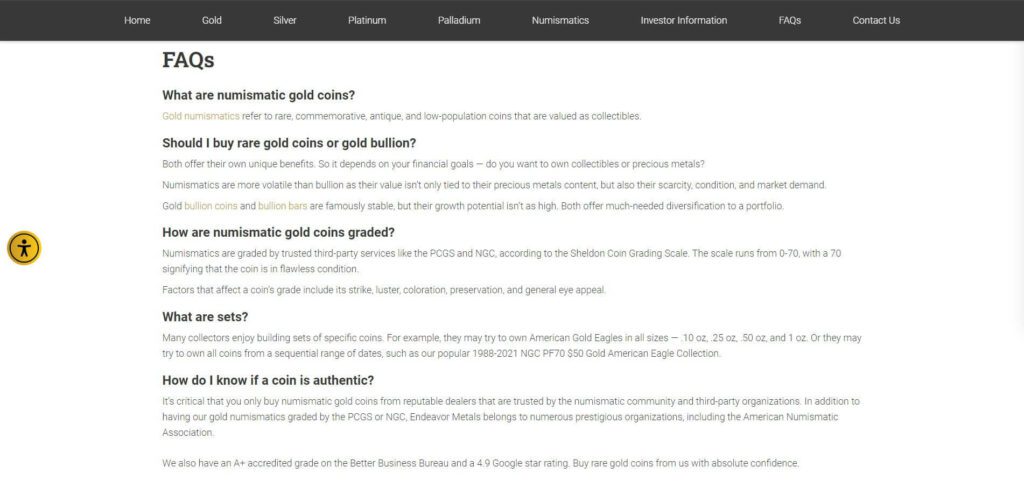Could your Shopify store be performing better? Optimizing your product pages might be the missing link.
Competing in the saturated ecommerce arena requires that every Shopify product page is optimized to appeal to both human visitors and search engine crawler bots. Search engine optimization (SEO) encourages search engines to position your store where it can easily be found on search engine results pages (SERPs).
The hard truth is that if your website isn’t showing up on the first page of SERPs, it might as well not exist at all. Your click-through rate (CTR) will be incredibly low, and out of those few visitors, only a tiny percentage will actually convert.
Ecommerce is a numbers game. Focusing on strategic SEO for ecommerce product pages is the key to getting more eyes on your site, naturally leading to more conversions and a higher bottom line.
Table of Contents
- 1 Fast Facts:
- 2 1. Provide Helpful Content
- 3 2. Highlight Features and Benefits
- 4 3. Research Keywords (and Use Them Effectively)
- 5 4. Be Aware of Buyer Awareness
- 6 5. Call Visitors to Action
- 7 6. Avoid Duplicate Content
- 8 7. Capture Attention Above the Fold
- 9 8. Be Descriptive With Titles
- 10 9. Address Frequently Asked Questions
- 11 10. Include Videos
- 12 Partner With the Premier Shopify SEO Specialists
Fast Facts:
A meager 0.44% of Google search users actually move along to the second page at all. In stark contrast, the first organic result has an average CTR (click-through rate) of 27.6%.
The average conversion rate for Shopify stores is 1.4%; the average conversion rate for the top 20% of Shopify stores is 3.3%. In other words, you’re doing well if you’re able to convert two customers out of every 100.
Implementing effective SEO for ecommerce product pages isn’t just for search engine crawler bots, either. Many Shopify product page optimization strategies also improve user experience, which entices them to stick around for longer, increasing the odds of them converting.
The average bounce rate for Shopify stores is around 40%. That means nearly half of visitors move along after viewing the first page they landed on. So, even if you’re lucky enough to attract a visitor, there’s a strong chance that they’re already on the way out.
These figures can be daunting—until you realize that the average Shopify store doesn’t have a solid SEO strategy. And, even if their landing page is optimized, many Shopify users overlook the importance of SEO for ecommerce product pages.
That’s where we come in. As leaders in ecommerce SEO, we can ramp up those numbers and get your Shopify site performing at its full potential. The following tips can give your site a boost, but partnering with top-tier SEO specialists is crucial.
Here are 10 action steps you can take to get more eyes on your products.
1. Provide Helpful Content
Confused visitors don’t convert and confusing sites usually don’t rank at all. Online shoppers have a four-second attention span—less than half of that of a goldfish. Every precious second counts. Your Shopify product pages must be easy to navigate and populated with highly relevant content.
Be authentic and don’t hold back in writing about your products in as much detail as possible. Consider common customer questions and proactively answer those on the page to put their shopping mind at ease.
2. Highlight Features and Benefits
Effective SEO for ecommerce product pages doesn’t mean keyword stuffing and hoping for the best—those days are long gone. You must provide genuine value to your visitors.
Clearly showcasing each product’s features and benefits keeps your visitors on track to converting and drastically increases the chances of your site ranking high on SERPs. Google’s algorithms favor informative, helpful websites that provide concise and accurate information.
3. Research Keywords (and Use Them Effectively)
Including the right keywords in your content can make a profound difference, but it requires finesse.
You ideally want to find keywords with lower competition and higher search volumes. Additionally, their placement and density play a significant role in the quality of your SEO for ecommerce product pages.
Keyword-driven SEO is an art form that requires a professional’s touch. Poorly implemented keywords can do more harm than good, so proceed with caution. Better yet, hire a professional SEO agency.
4. Be Aware of Buyer Awareness

Buyer awareness refers to the level of familiarity you can expect your visitors to have with your product.
For example, if you’re selling very niche or proprietary items, there’s a good chance that your visitors will have a low awareness of your product. In that case, your Shopify product page should be packed with in-depth details to increase awareness.
On the other hand, your content-based SEO for ecommerce product pages can be more sparse and straightforward if your typical visitor already has a high awareness of your product.
For example, everyone’s familiar with T-shirts. In the image above, the TRUEWERK product page simply highlights the special features and benefits that make this particular T-shirt unique. The color, size, and the Garment Warmth Level options are all above the fold so shoppers can quickly see important call-outs next to the add to cart button.
5. Call Visitors to Action
At the end of each product description, include a call to action (CTA). Even if you have stellar SEO for your ecommerce product pages with top-notch content, sometimes customers need a gentle nudge in the right direction. The end goal is a conversion, so tell your visitors how to take that next step. You’re the authority in your field, so communicate with confidence.
6. Avoid Duplicate Content
Each Shopify product page needs a unique description. Duplicate content can confuse search engine crawler bots, causing your site’s visibility to decrease. While it might be tempting to copy and paste content for similar products to save time, you’re going to pay for it in the long run.
7. Capture Attention Above the Fold

Effective SEO for ecommerce product pages requires that you deliver engaging, informative content above the fold—right where visitors’ eyes land first. Many online shoppers won’t bother scrolling, so it’s imperative that you provide critical information and the ability to convert quickly.
For example, in the image above, you can see that the content above the fold includes the product title, rating, number of reviews, product images, price, and a button to add to cart. A customer who doesn’t feel like reading the product description can find the most basic information within seconds and then convert without ever needing to venture below the fold.
8. Be Descriptive With Titles
SEO for ecommerce product pages begins with the product’s title. You want both humans and bots to be able to detect and understand exactly what you’re selling.
In the Rainbow Symphony example above, the title could be “Plastic Eclipse Glasses,” but then you wouldn’t know that they include two free pairs of paper eclipse glasses.
And, if you hadn’t yet clicked the link from the SERP, you wouldn’t know that they wrap around the head. Don’t rely on product images to highlight features. Your title needs to convince searchers to click on your Shopify product page in the first place.
Bad Title: Red Earrings
Good Title: Vintage Pin-up Style Lucite Red Hoop Earrings – 1.2 inch
9. Address Frequently Asked Questions

Frequently asked questions (FAQs) sections are becoming increasingly important when it comes to SEO for ecommerce product pages. You can direct a lot of traffic your way by establishing your product pages as resources for information. And, if you provide quality answers, Google might just make your site appear every time that question is asked.
For example, in the image above, Endeavor Metals answers common questions about numismatics (rare coins). If someone is asking Google how numismatic gold coins are graded, they could easily end up on this product page.
Make sure you include open-ended FAQs. Rather than focusing on details specific to your company, make your questions and answers have broad appeal so your SEO for ecommerce product pages reaches a larger audience.
Good Question: How do I know if a coin is authentic?
Bad Question: Do you sell authentic coins?
Nobody’s asking Google if they sell authentic coins! They’re asking how to know if a coin is authentic. When answering that inquiry, you can explain A) how to know if a coin is authentic and B) why the visitor should trust that you sell authentic coins.
10. Include Videos
A Shopify product page with a video provides more value to your visitors, and Google’s algorithms prefer multimedia content.
Including or not including videos won’t necessarily make or break your position on SERPs, but videos can give your product page an advantage over other similar product pages.
Sometimes effective SEO for ecommerce product pages simply requires that you provide that extra something that tips the scales in your favor. If every other metric is identical, but your page has a video, guess who’s getting that prime spot on SERPs?
Partner With the Premier Shopify SEO Specialists
If your Shopify store isn’t reaching its potential, it’s time to call in the experts. We’re the best in the business—bar none. Have a look at our Shopify case studies and client reviews to get an idea of what we’ve accomplished and what we can do for your brand.
Improving SEO for ecommerce product pages is just the start. From Shopify web design to digital marketing, we’re able and eager to give your site the boost needed for your business to thrive.
Every Shopify product page counts. These ten action steps will put you on the right path, but you’ll only get so far on your own. Partner with us, and we’ll bring you to your end goal and beyond. Contact us today for a free consultation.


